Sea of Green, usually abbreviated “SOG,” is a method of growing marijuana that forces flowering at a young age.
The plants will have only been in a vegetative state for about two weeks. This method allows you to harvest much earlier than growing your plants normally.
The Sea of Green (SOG) method is a cultivation technique popularized for its efficient use of space and rapid harvest cycles. This approach involves growing many small plants in close proximity to each other, which maximizes light exposure and encourages a quicker vegetation period. By focusing on growing more plants with smaller yields each, you can achieve a higher overall production rate compared to traditional methods that grow fewer plants with larger yields.
When you implement the Sea of Green method, you’re optimizing for the number of harvests per year. This is because the plants are encouraged to flower at a much earlier stage than usual, sometimes as early as two to three weeks into the vegetative state. This method is particularly beneficial if you are working with limited space, as it emphasizes vertical plant growth, leading to the efficient use of vertical space and lighting. With SOG, your primary goal is to create a uniform canopy that allows light to reach all of the plants equally, reducing wasted energy and increasing your grow space’s overall yield efficiency.
Benefits of Sea of Green (SOG)
So, what are the benefits of the SOG technique? It’s really used when space is limited in a grow room. It allows you to maximize your space without sacrificing yield.
When you put the plants into flowering stage with a 12/12 light regimen, you can fit more flowering plants into more space.
The yield of a single plant might be smaller, but the Sea of Green yield you get cumulatively will be larger.
Better harvests and more marijuana
SOG growers generally have time constraints, as well. Certain marijuana varieties take longer than 10 weeks to complete their vegetative cycle. With the SOG method, you get more harvests and more marijuana. This is a method employed by larger operations where a consistent supply is required.
Download my free Grow Bible for more information about Sea of Green marijuana growing, as well as other advanced methods!
Growing cannabis under artificial light means that you need to make use of that light more efficiently. This is because you’re paying the electricity bill, but also because you want to get the most out of your plants.
Many indoor cannabis grow room setups are set up to light plants from above. With this system, the upper leaves and branches cast a shadow on the lower sections, meaning that there is always part of the plant that’s not receiving as much light.


When you pack the plants in close proximity, you create a canopy of buds that makes the most out of your light. One big HPS light will only give you one option for lighting, but multiple HPS grow lights will give you greater light coverage across your entire crop. If you want to know what the best LED grow light for cannabis are, please read our guide.
The SOG technique is especially useful with large quantities of cuttings from a cloned marijuana plant.
It saves you from having to buy seeds and also ensures that your plants will be female and of high quality.
Also read How To Make Marijuana Clones
SOG grows typically don’t require pruning, but some growers like to tidy up the lower branches below the canopy.
This helps the plant put its focus on the main bud and improve the overall flow of air pressure underneath the canopy which can be measured with a vpd chart. You can also clone these cuttings and provide another bunch of SOG plants to keep the system on repeat.
How to use the Sea of Green method
You don’t need to have any special skills for the SOG method to be effective. All you really have to do is understand the concept. The lack of a need for training and pruning makes SOG one of the easiest methods for growing weed.
Step-by-step guide to SOG
Time needed: 45 days, 12 hours and 5 minutes
Below you’ll find a simple step-by-step guide to the Scrog method:
- Germinate
Germinate seeds or take cuttings to create clones
- Grow
Grow them using 18 to 24 hours of light until they reach around 10 to 12 inches (25 to 30 cm) in height
- Spacing
Space the plants out at about 1 or 2 plants per square foot (30cm by 30 cm) and change the lighting regimen to 12/12 to force flowering.
- Fimming
Once a dense canopy of buds forms, trim the branches beneath and use them for clones.
- Harvest!
Harvest when you’re ready.
Some growers start a 12/12 lighting regimen when the marijuana plants are only about 6 inches tall. Likewise, some growers may pack the plants more or less densely depending on their preference.
‘You can pack short plants tightly together in a “sea of green” (SOG) or a “screen of green” (SCROG) to maximize yield.’
Jorge Cervantes
Requirements will change depending on the variety and the grow room. Use this guide as a base, but make adjustments as necessary for your particular situation.


SOG systems generally work better with indica varieties because of their short stature and single primary cola. Sativas can work, but they are typically too “leggy” for the SOG system to work well. Best is to top sativa strains a few days before changing the light cycle to 12/12.
Sea of Green grow guide
| SoG Grow Guide | Propagation (Early-Stage) | Vegetative Growth | Flowering |
|---|---|---|---|
| Avg. Light Intensity | 150-200 | 200 increasing gradually to 450-500 | 450-550 Increasing to 700-800 |
| Photoperiod | 18 | 18 | 18 |
| Ambient Room Temp (Day) | 70-720F 21-230C | 80-85 0F 26-290C | 80-85 0F 26-290C |
| Ambient Room Temp (Night) | 60-20 0F 16-210C | 70-750F 21-240C | 70-750F 21-240C |
| Ambient Relative Humidity (Day) | 100% until rooted, within 4-7 days, then vent to 80% | 75-80% (early) 55-67% (mid/late veg) | 55-67% (early) 60-62% (mid/late veg) |
| Ambient Relative Humidity (Night) | Same as daytime, see Propagation section below fro more information. | 75-80% (early) 55-67% (mid/late veg) | 55-67% (early) 42-57% (mid/late veg) |
| Vapor Pressure Deficit (Day) | 0 | .67-1.00 (early) 1.11-1.80 (late) | 1.11-1.80 (early) 1.28-2.00 (late) |
| Vapor Pressure Deficit (Night) | 0 | .50-.75 (day) .82-1.34 (night) | .82-1.34 (night) 1.07-1.73 (late) |
| CO2 Enrichment | – | 1200-1500 | 1200-1500 |
The Sea of Green (SOG) method is an innovative approach to maximize the yield of cannabis plants even when you’re working with limited space. It emphasizes quick transitions to the flowering stage and the cultivation of many small plants.
Definition and Basic Principles
Sea of Green (SOG) is a cultivation technique designed for cannabis that encourages the early flowering of plants. The main principle behind SOG is to grow many small plants per square meter, rather than a few larger plants. This approach allows the plants to focus more on the development of the top bud, resulting in a quicker harvest time. By manipulating the light cycle, typically switching to a 12/12 day/night regime shortly after the plants take root, you trigger the flowering stage faster than in traditional growing methods. The SOG method is particularly effective when you need to make the most out of a limited space.
Historical Background
The Sea of Green method originates from indoor European growers who needed to produce high yields in small spaces due to legal and spatial restrictions. Historical records are sparse, but anecdotal evidence suggests that SOG surfaced as a popular technique in the late 20th century. It quickly gained traction as growers recognized its efficiency for maximizing the cannabis canopy area and therefore the light absorption in constrained environments. With the SOG technique, you can optimally utilize indoor growth areas and produce multiple harvests per year.
Preparatory Steps for SOG
Before you start your Sea of Green (SOG) cultivation, it’s essential to set up your grow space and select the appropriate cannabis strains. Early preparation ensures a dense canopy of small plants with a maximized yield per square foot.
Choosing the Right Genetics
Selecting the right genetics is crucial for a successful SOG setup. Look for cannabis strains with a short stature and quick vegetative growth. Predominantly indica varieties work well due to their bushy and compact nature, whereas sativa strains often grow too tall, making them less suitable. It’s advantageous to use different strains that have similar growth patterns to maintain a uniform canopy.
Clones vs. Seeds
Starting with clones from a healthy mother plant ensures uniformity in your SOG garden, as all the plants will exhibit the same genetic traits such as height, flowering time, and yield. This uniformity is harder to achieve with seeds, as there can be more variation between seedlings, even from the same batch. However, seeds can be used if you’re willing to invest more effort in selecting and cultivating uniform plants from a large batch of seedlings.
Potting and Containers
Your choice of pots or containers directly impacts the root system and therefore the overall health of your cannabis plants. For SOG, it’s ideal to use smaller pots ranging from 1 to 2 gallons to limit the size of the plants and encourage a quicker transition to the flowering stage. Ensure your pots provide adequate drainage to prevent waterlogging.
Growing Medium and Nutrients
A well-prepared growing medium is vital for the development of your SOG crop. Options like soil, coco coir, or hydroponics can be employed, each with its benefits—soil being more forgiving and hydroponics offering faster growth. Pair your medium with a balanced nutrient regimen tailored for cannabis to provide optimal growth conditions. Starting with a lighter nutrient mix for your clones or seedlings helps avoid over-fertilization issues. As your plants grow, you can adjust the nutrient concentrations according to the specific needs during the vegetative and flowering stages.
Cultivation Techniques
In this section, we focus on the specific practices essential for successfully implementing the Sea of Green (SOG) method, targeting improvements in energy use, efficiency and maximizing yield.
Vegetative Stage Management
During the vegetative stage, your plants need a strong start. You should limit this phase to about 2-3 weeks, ensuring that plants begin to flower before they get too large. This is crucial for maintaining a dense canopy of buds.
Training Techniques
Plant training plays a vital role in SOG success. Techniques such as pruning and training are used to direct energy to the topmost buds. Topping—cutting off the top of the plant—can be effective, but it should be done sparingly to keep the plants short and avoid disrupting the SOG method’s structure.
Canopy Formation and Maintenance
An even canopy is vital for light efficiency. By arranging your plants closely, you encourage them to grow upwards rather than outwards, resulting in a dense canopy that maximizes space and light exposure.
Lighting Strategies
Utilize artificial light optimally by maintaining appropriate light schedules. SOG typically requires a light cycle of 18 hours on and 6 hours off during vegetative growth, shifting to 12 hours on and off when flowering is induced. Effective light distribution ensures all plants receive the light they need.
Watering and Fertilization
Carefully balance watering and fertilization to meet your plants’ needs without overdoing it. Consistent moisture and access to nutrients are critical for health and growth, but overwatering can harm plant development and yield.
By applying these techniques with confidence and precision, you’ll harness the full potential of the Sea of Green method to achieve remarkable efficiency and high yields.
Harvesting Considerations
When employing the Sea of Green (SOG) method, your harvesting strategy is crucial for obtaining optimal yield. Understanding when to harvest, the proper techniques for cutting and drying, and the potential for multiple harvests will greatly influence the quantity and quality of your buds.
Identifying Harvest Time
To ensure the highest yields, you need to carefully monitor the maturity of your plants. Trichomes, the tiny crystal-like structures on the buds, are key indicators. When most trichomes appear milky white with some amber, it’s usually time to harvest. Choosing the correct harvest time is critical for the potency and flavor of your buds.
Cutting and Drying Techniques
Once the harvest time is determined, cutting should be done effectively to preserve the plants’ integrity. Use sharp, clean scissors to cut the branches, and handle the buds gently to avoid trichome damage. Drying should also be conducted carefully; hang the branches upside down in a drying room with controlled humidity and temperature for even and thorough drying.
Have you tried the Sea of Green technique? Please feel free to share your experience in the comments!
Happy growing!
Robert
Other pruning methods
Besides Sea of Green (SOG), there are more techniques to prune your plants for more yield. Find a short explanation in my pruning article, or head directly to a technique below:
FAQs about the Sea of Green (SOG) method
Which type of strain is better for SOG?
Sativas can work, but Indicas are generally more fitting.
What are the benefits of SOG?
SOG allows you to maximize your space without sacrificing on yield. It is very well suited for commercial growers.
Are there any downsides to SOG?
Combining Indica and Sativa varieties is tricky. Pests and diseases can spread rapidly, and it takes more time to tend the plants
How does the Sea of Green technique improve yield and efficiency in growing?
The Sea of Green technique involves growing many small plants closely together as a way to maximize space and speed up the harvest cycle. By allowing plants only a short vegetative stage, you harvest more often and make efficient use of light, which can result in a higher yield per square foot.
What are the advantages of using autoflowering strains with the Sea of Green method?
Using autoflowering strains with the Sea of Green method reduces the need for strict light cycle management, as these plants flower based on age rather than light exposure. This can streamline the growing process and these plants are often smaller, which suits the close spacing of SOG setups.
What are the key differences between the Sea of Green (SOG) and Screen of Green (SCROG) methods?
The primary difference between SOG and SCROG lies in plant training and spacing. SOG entails growing many small plants without much training, aiming for a quick turnover, while SCROG uses a screen to train fewer plants to create an even canopy, often resulting in larger yields per plant but a longer vegetative period.
Can you provide a step-by-step guide for setting up a Sea of Green growing system?
Certainly. To set up a Sea of Green system, start small clones or seedlings in pots that are 2 to 4 inches in size. Space them closely, about one plant per square foot. Ensure adequate lighting and monitor for a brief vegetative phase before switching to a 12/12 light cycle to induce flowering.
What factors should be considered when choosing plant strains for a Sea of Green setup?
When choosing plant strains for SOG, look for ones that have a naturally bushy, compact growth habit and a short flowering time. These characteristics are crucial to achieving a quick turnover and uniform canopy within the SOG method.
How do you optimize the layout and plant spacing for a Sea of Green cultivation?
To optimize plant spacing in an SOG cultivation, aim for a dense, even canopy. This means placing plants about 1 square foot apart, although this can be adjusted based on the final size of your chosen strain. Ensure that each plant receives equal light exposure to promote a uniform growth throughout the canopy.
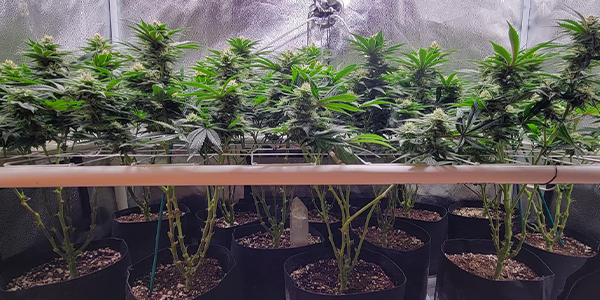
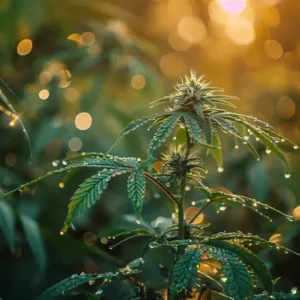
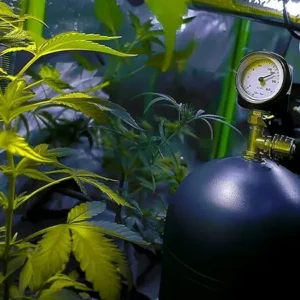

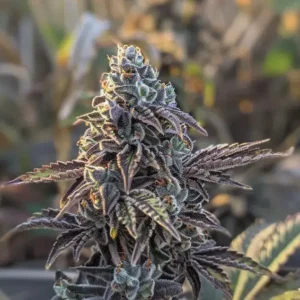
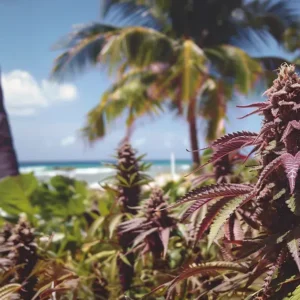
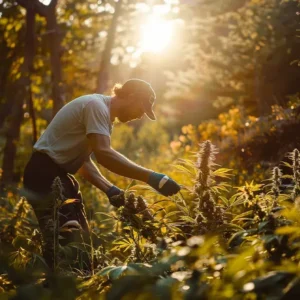
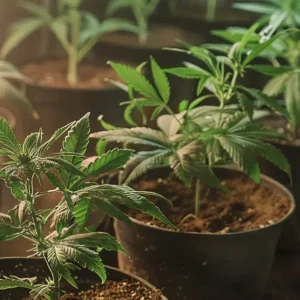
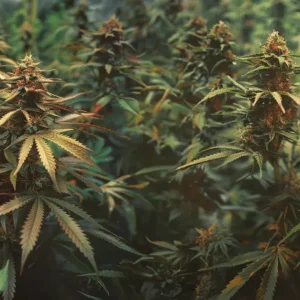

Very informative and great article!
This wonder plant provides several benefits that its users are grateful for. Marijuana has more medicinal value than some of the drugs that the FDA approves. It’s a natural remedy for various ailments. Unlike other types of medicine, this herb has never caused death. It’s one of the effective medications that doctors prefer due to its pain relief properties.
Medical marijuana is extracted from the versatile cannabis plant. It generally exists in the form of dried leaves or stems. It offers several benefits to the human body. Apart from pain relief, medical marijuana has countless other health advantages.
How about giving credit where credit is due. I stopped off at High Times onmy way to NORML ’85 and showed Dean Latimer and John Howell my new book, “Growing Indoors for Fun and Profit” and told hem about Sea of Green.
I suggest you ask George Van Paten aka “Jorge.” who originated it.
what a guide
Wayne. SOG requires plants to be set side by side. I would use 9 to 12 so I could do rows of three. Best if you join our forum ilgmforum.com where we can discuss this extensively. hard to just guess. Probably need only 1 – 1000w lamp
Do u ship to tennessee
We do, no problem at all!
Stacy
ILGM
question :::10 white willow sog plants , how many sq feet would I need , and how many 1000 watt hps lights do I need ???? {thanks }
D wade morrison,
Ebb and flow.
What is the best kind of Hydroponic System to use for the SOG growing?
wow, just, wow
I have a room 8×8 5ft high with 4 x 600 ‘s could tell me the best method 4 a sea of green pots soil etc plz
Study.. There’s tons of information out there. Like in this post. Google YouTube
PMtwo words kitchen books
Hello, I’m Rick. In the late 90’s, I helped to produce and market the Sea of Green Video, and later, sold the rights to High Times Magazine. You should purchase a copy or perhaps view on line if available. It is the actual grow that was perfected in a fortyfoot tractor trailer with a refrigeration unit for climate control. Many people, have a perspective, that causes them to believe that the strain is most important. While, the strain makes a difference initially, Climate Control is most important. You will develop more fruitful strains through the cloning process. The pot, grown in the Video was better than anything around and some of those clones, came from Swag.
That pot was better than what is currently grown.
I believe that climate control is the most significant step in cultivating extraordinarily supreme strains. Another thing I learned when working with Hans, the Master Mind of the Sea of Green, that by growing in this method, we actually condition the plant to give every ounce of energy to the Buds. This is the difference that most do not perceive, therefore, do not appreciate it’s significance in working with the laws of Nature. Check it out. It is a valuable tool in creating the very best in the world.
Hope this assists you towards your efforts.
Sincerely,
Richard Coonan jr
Any of regular strains we have in the seed shop would be great for a SOG. As you know SOG is built with clones; So getting feminized seeds, and sexing a “Mother Plant” is the way to go. Once you have a Mother Plant, you can make all the clones for your SOG that you want. Happy Growing 🙂
Hiya,
could you please recommend some seeds/strains or for SOG?
Many thanks!
If you have the room to raise a lot of clones, then this is the way to go. To get started can be fairly cheap for do it yourself’ers, all the way to a couple grand for really nice automated systems. Oh yeah; PLus Lights and ventilation